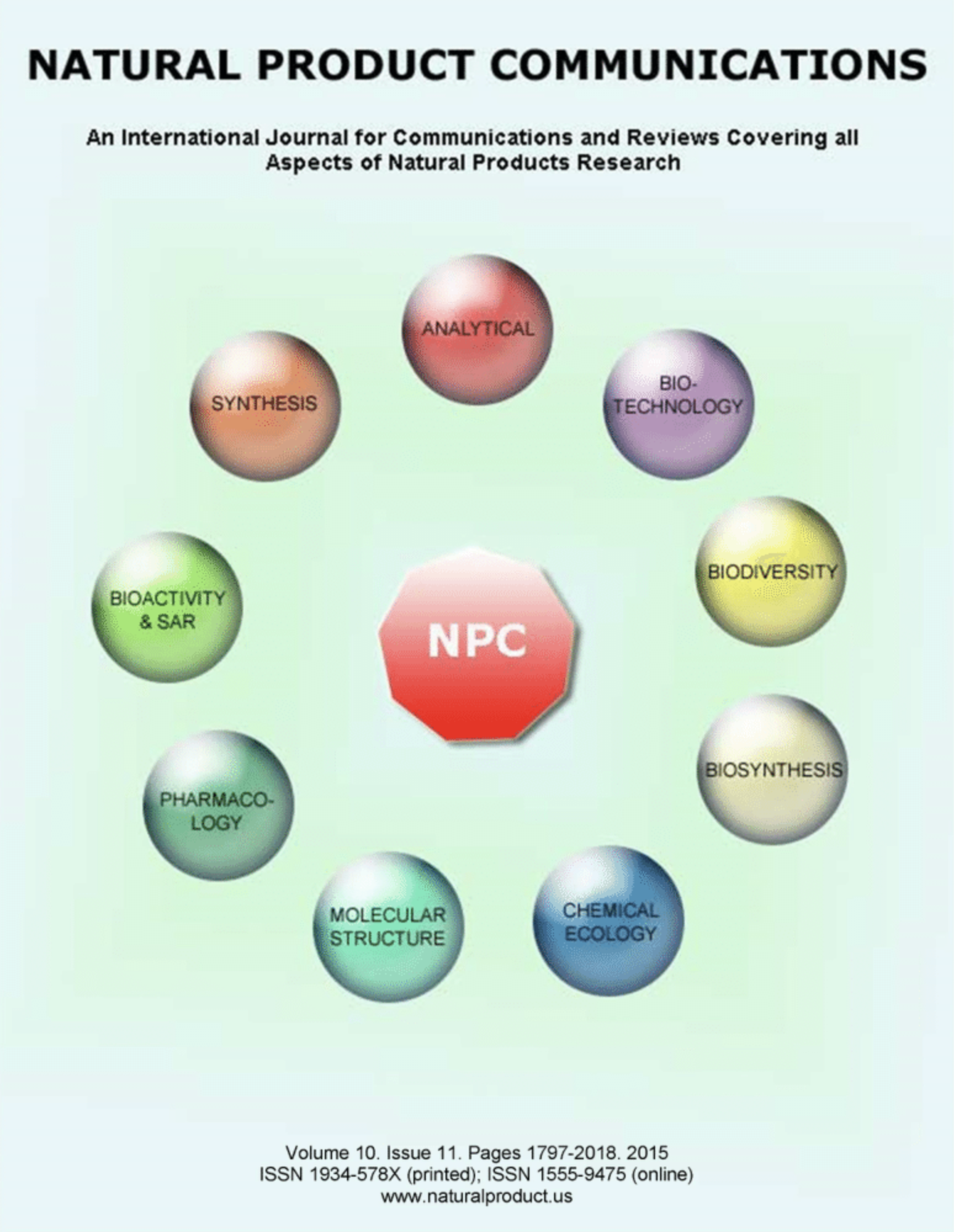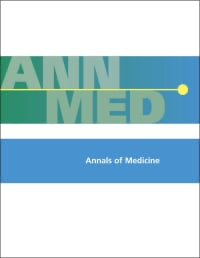Shao Yao
How to submit an article:
- Registered users can submit any published journal article that has a unique DOI (Digital Object Identifier) name or link to Research Hub.
- For example, you can paste the full DOI link:
https://doi.org/10.1109/5.771073or just the DOI name:10.1109/5.771073into the field above and click submit. - The person who is first to submit a valid article to Research Hub will forever be credited for it, and every article submission earns you +6 Research Points.
Also known as: Bai Shao, Paeonia lactiflora, Paeoniae Alba
Related Topics
Published research studies are articles that present the findings of original research that has undergone a peer-review process and has been made publicly available in scholarly journals, books or other media.

Identification of the Anti-Inflammatory Compound, Paeoniflorigenone, in Radix Paeoniae Alba for the Treatment of Polycystic Ovary Syndrome Through Network Pharmacology and Molecular Docking
2022 Oct Natural Product Communications Li J, Wang G, Chu S, Liu D, Zhao H, Li H
This study manifested that the most effective anti-inflammation compound of RPA was paeoniflorigenone and provided a potential therapeutic strategy for PCOS treatment.
Network Pharmacology Shao Yao
Elucidation of the Effects of Si-Wu Tang on Menstrual Disorder Patterns through Activation of Aromatase and Antioxidation
2022 Jan Frontiers in Pharmacology Guan-Cheng Huang, Yi-Zhe Tsai, Chia-Jung Lee, Heng-Yu Chang, Ching-Chiung Wang
Experimental Study Shao Yao Si Wu Tang Oestradiol Shu Di HuangSi Wu Tang has improved menstrual symptoms by increasing estradiol content and antioxidative effects as a result of its herbs' synergistic relationships.

A network pharmacology approach to predict potential targets and mechanisms of “Ramulus Cinnamomi (cassiae) – Paeonia lactiflora” herb pair in the treatment of chronic pain with comorbid anxiety and depression
2022 Jan 31 Annals of Medicine Pan HT, Xi ZQ, Wei XQ, Wang K
Network Pharmacology Depression Chronic PainThe Gui Zhi-Shao Yao herb pair in traditional Chinese medicine potentially treats chronic pain, anxiety, and depression through interactions with nine key targets.

Elucidation of the Effects of Si-Wu Tang on Menstrual Disorder Patterns through Activation of Aromatase and Antioxidation
2019 Mar 05 Evidence-Based Complementary and Alternative Medicine Huang GC, Tsai YZ, Lee CJ, Chang HY, Wang CC
In this study, we recommend that if the ratio of Shu Di Huang and Shao Yao should be increased, the function of SWT will be more forceful against menstrual disorder patterns through activating aromatase and antioxidative properties.
Network Pharmacology Si Wu TangResearch insights are moderated by the Research Hub team and offer an at-a-glance overview of interesting research findings.

2022 Annals of Medicine
The Gui Zhi-Shao Yao herb pair in traditional Chinese medicine potentially treats chronic pain, anxiety, and depression through interactions with nine key targets.
Network Pharmacology Chronic Pain Depression
A network pharmacology approach to predict potential targets and mechanisms of “Ramulus Cinnamomi (cassiae) – Paeonia lactiflora” herb pair in the treatment of chronic pain with comorbid anxiety and depression
Pan HT, Xi ZQ, Wei XQ, Wang K

2022 Frontiers in Pharmacology
Si Wu Tang has improved menstrual symptoms by increasing estradiol content and antioxidative effects as a result of its herbs' synergistic relationships.
Experimental Study Oestradiol Shu Di Huang Si Wu Tang
Elucidation of the Effects of Si-Wu Tang on Menstrual Disorder Patterns through Activation of Aromatase and Antioxidation
Guan-Cheng Huang, Yi-Zhe Tsai, Chia-Jung Lee, Heng-Yu Chang, Ching-Chiung Wang
Review Articles
Review articles summarise and critically evaluate the current state of research on a specific topic or field by synthesising multiple primary research studies.
Clinical Trials
Clinical trials are research studies that involve people and are conducted to evaluate the safety and efficacy of new treatments or interventions, such as drugs, medical devices, or behavioural therapies.
Study Protocols
Published study protocols are detailed plans that outline the objectives, methodology, statistical analyses, and organisation of a research study that have been made publicly available for others to review and use as a reference.
Presentation Slides

Network Pharmacology
The Gui Zhi-Shao Yao herb pair in traditional Chinese medicine potentially treats chronic pain, anxiety, and depression through interactions with nine key targets.
Pan HT, Xi ZQ, Wei XQ, Wang K

Experimental Study
Si Wu Tang has improved menstrual symptoms by increasing estradiol content and antioxidative effects as a result of its herbs' synergistic relationships.
Guan-Cheng Huang, Yi-Zhe Tsai, Chia-Jung Lee, Heng-Yu Chang, Ching-Chiung Wang
Executive Summary
Write an executive summary in the form of a blog article on the topic of "Research into Chinese medicine treatment for Shao Yao" summarising the research below and using language that can be easily understood by patients and avoiding medical jargon using a professional and caring tone of voice.
Write an executive summary in the form of a blog article on the topic of "Researched Chinese medicine treatments for Shao Yao" summarising the research below in an objective and easy to understand way, and using language that can be easily understood by patients. Group the article into Chinese medicine treatments first, followed by nutrition and other treatments. Avoid using medical jargon and use a professional and caring tone of voice.
Write me a concise but easy to understand executive summary on the topic of "Chinese medicine treatments for Shao Yao" based on the following research that I will give you. Your summary should be 2 paragraphs long in Australian English spelling and include references to the studies.
A Network Pharmacology published in 2022 in the journal Annals of Medicine found that The Gui Zhi-Shao Yao herb pair in traditional Chinese medicine potentially treats chronic pain, anxiety, and depression through interactions with nine key targets. The methodology in this research utilised network pharmacology to explore the active components of the "Gui Zhi-Shao Yao" herb pair and their possible targets. Initially, 15 active compounds were identified through a series of analysis which revealed about 130 potential targets. By considering the intersections between the targets of the "Gui Zhi-Shao Yao" herb pair and chronic pain, anxiety disorder, and mental depression, nine vital targets were identified and listed in order of importance. The results discussion revealed that the "Gui Zhi-Shao Yao" herb pairing acted on the nine identified key targets to alleviate chronic pain, anxiety, and depression. Gene ontology and pathway analysis demonstrated that there were 11 primary pathways, including AGE-RAGE signalling pathway, IL-17 signalling pathway, and TNF signalling pathway. These pathways appear to be actively involved in the pathological processes, providing a holistic understanding of how the "Gui Zhi-Shao Yao" herb pair functions therapeutically.
A Experimental Study published in 2022 in the journal Frontiers in Pharmacology found that Si Wu Tang has improved menstrual symptoms by increasing estradiol content and antioxidative effects as a result of its herbs' synergistic relationships. In the methodology of the study, a testosterone-treated MCF-7 cell model was employed to determine the effects of each herb in the SWT formula. Key metrics that were considered included the regulation of estradiol, antioxidative effects, and the total polyphenol and polysaccharide contents as quality markers. The study also explored the potential ability of certain elements within the formula to act as an aromatase promoter, notably catalpol and other elements. In terms of results, certain herbs in SWT such as catalpol showed an ability to significantly increase estradiol content and boost upregulation in cell culture, indicating their role as potential aromatase promoters within the formula. Antioxidant activity was also strong in other compounds like pentagalloylglucose, gallic acid, and ferulic acid. These antioxidative effects were attributed to the presence of polyphenols in the herbs. Furthermore, the herb with the strongest antioxidant effects could possibly help ameliorate menstrual disorder patterns due to its ability to prevent ROS damage to the ovaries.
Moderation Tools
Topic
Sign In
Users not signed in are limited to viewing the 5 most recent items of content.